S.T.A.L.K.E.R: Shadow of Chernobyl Review
S.T.A.L.K.E.R: Shadow of Chernobyl
After many years of development, S.T.A.L.K.E.R finally reaches retail. Has it been worth the wait?
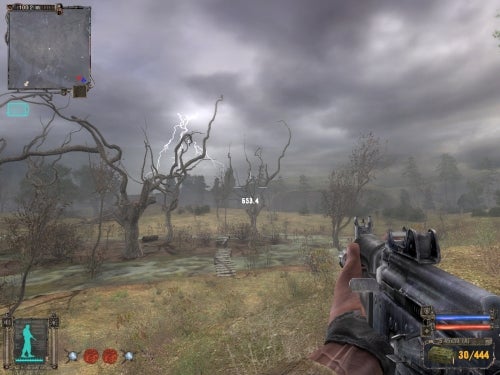
Verdict
Key Specifications
- Review Price: £24.95
”’Platform: PC”’
One always approaches delayed games with a certain level of caution. History is strewn with a collection of hotly anticipated flops that slipped from one delay to another, with final products that mirrored the anarchy in which they were created.
That said, this doesn’t mean one can’t still look forward to such games and there was no lack of interest when the S.T.A.L.K.E.R review code finally arrived in the offices a week or so ago. What began as a hopelessly ambitious open-ended FPS has morphed into an FPS come RPG which, although not quite as ambitious as before, is no less impressive in scale or lacking in open-ended endeavour.
Set in an alternate future, S.T.A.L.K.E.R puts the player into “The Zone” – a 30 square kilometre area surrounding the Chernobyl Nuclear Power Plant that tragically went into meltdown in 1986. Developed by Ukrainian studio GSC Game World, the game presents a future where additional events in 2006 and 2008 led to the development of various anomalies and mutated animals. Now 2012, curiosity and greed has led humankind to once again populate the area with divergent groups putting forth their own agendas to control The Zone.
You play the role of The Marked One, who after an attack is left with no memory of his former life and knows nothing but of his desire to find and kill a man named Strelok – a rogue Stalker of unknown origin.
With your life saved you are put to work by a trader who offers you money in return for completing assignments. Although there is a central plot – of sorts – S.T.A.L.K.E.R takes an approach much akin to the likes of Oblivion, and other RPG titles, in giving the player the choice to pursue different quests as they see fit.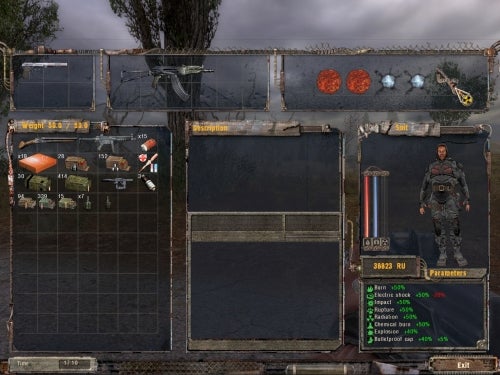
One rather annoying facet of this system is the lack of information on your potential reward ”before” you take on a mission. Though this is hardly unique to S.T.A.L.K.E.R, it does present a problem because many side-missions do not represent real value for money considering the risks involved and the expenditure on ammunition that must be replaced.
This makes taking on side-missions a hit and miss affair, with selling on artefacts and weapons a far more attractive option. Ultimately, one can make more than enough money by doing this and completing tasks central to driving the plot; thus further reducing the incentive to take on extra tasks.
What’s immediately apparent when you first start playing S.T.A.L.K.E.R is how different the combat is when compared to other shooter titles. For starters there’s an Oblivion-like energy bar, and this has a significant effect on both general travel and combat. During prolonged combat there’s a good chance your energy may become depleted and it’s important to manage your energy levels using energy drinks and ‘artefacts’ – more on which later.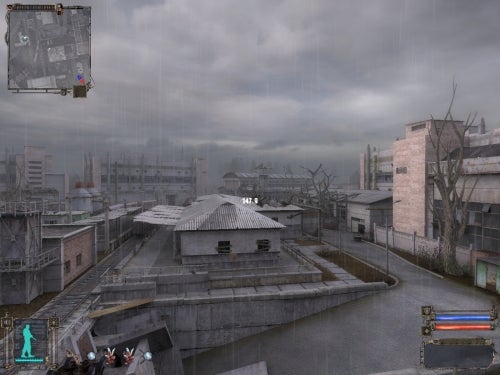
Moreover, when low on health you’ll move slowly – so you can’t runaway too easily – while guns will deteriorate over time and jam when used intensively. Another intelligent addition is the inability to sprint and strafe simultaneously, and though this takes some getting used to it’s a logical and realistic approach to movement.
S.T.A.L.K.E.R also takes a slightly different approach to health, with a bleeding system whereby injuries will continue to reduce your health unless bandaged. There are three levels of bleeding, each indicated by a symbol that appears on the right hand of the screen, and failure to act upon these warnings ends in a drawn out demise.
As if that weren’t enough you also have to contend with radiation, and when suffering from radiation poisoning your health will continue to drop until you administer anti-radiation drugs – or drink some Vodka!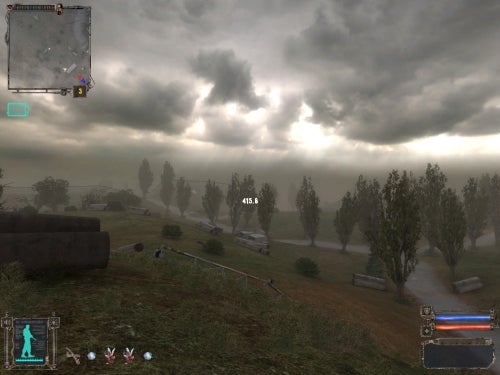
All these elements take a little getting used to, and as a result the early stages are characterised by some fairly tough gameplay in which you must choose your battles carefully. This degree of challenge does, however, make S.T.A.L.K.E.R a rewarding experience, and the developers should be congratulated for not dumbing down the gameplay in order to make it easier.
Although there is a degree of RPG to S.T.A.L.K.E.R, it’s by no means as prevalent as in games such as Deus Ex. The mission structure and inventory management point toward this influence, but there’s no skill development or levelling up to deal with – which is no bad thing in my book.
Inventory management is a key part of the game, and knowing what to keep, what to sell and what to drop is a constant consideration. You can carry up to 50kg of items, and everything you carry has a weight and space requirement.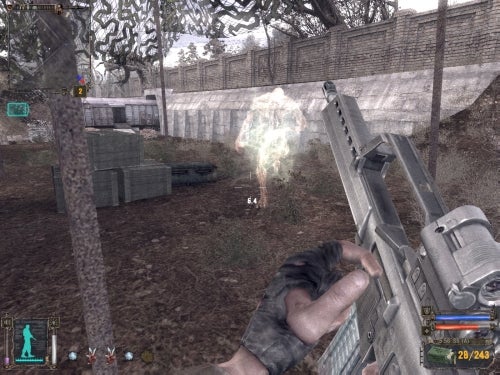
Another RPG type factor are artefacts; pieces of material created by the unstable environment in The Zone. When worn on your belt artefacts have potentially beneficial effects, while also being an important source of income as you sell on artefacts you don’t need.
You can wear up to five artefacts on your belt, and you must choose how to combine the artefacts you find to best suit the style in which you play. For example, some of the most useful artefacts are those that provide protection against radiation; however most artefacts have negative properties as well – such as reducing endurance or resistance to natural hazards.
Although many common artefacts can be found lying around all over The Zone, the most valuable and useful take some discovering; adding an element of exploration to the game. These artefacts are also located in the most inhospitable areas, with dangerous anomalies and mutated creatures to contend with before you can collect your booty.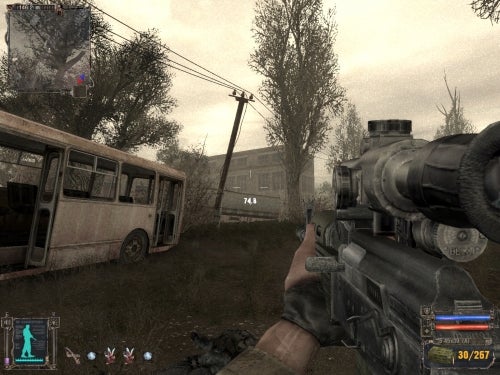
This brings us nicely onto the The Zone itself, and one can’t help but be impressed by the world created by GSC Game World. It’s spent years plotting the area surrounding the crestfallen power plant and by combining this work with a little creative license, the developers have created a convincing environment that oozes tension.
The countryside is littered with anomalies and localised areas of radiation, so you can never wonder too aimlessly for fear of stepping into a potentially dangerous area. There are plenty of other dangers too, with mutated animals roaming the area – not to mention the various bandits and other factions vying for your attention.
A key component of this environment is the “A-Life” simulation system, which reputedly tracks the progress of thousands of NPC characters. The game has its own timeline too, with night and day cycles and an impressively realistic weather system adding to the atmosphere.
Thunderstorms are a particular highlight, with lightning in the distance illuminating the surrounding countryside. The time cycle also has a significant effect on gameplay, with night time obviously providing more advantage for sneaking by unnoticed; infiltrating bases and heavily fortified locations. 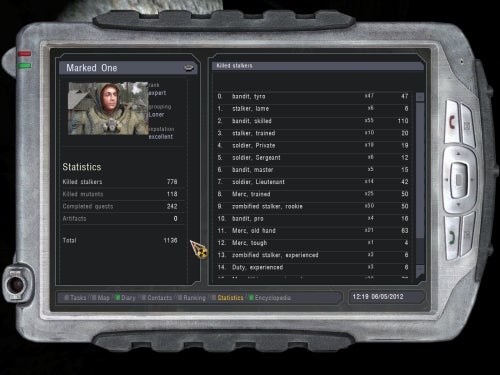
Throughout the game there’s a definite sense of activity, though it isn’t quite as convincing as the developers might have you believe. Nonetheless there is evidence of this system in action, and if you play particular sequences in completely different ways you will notice the difference.
By way of example I played through one section in the game twice; first playing methodically and then rushing through ignoring enemies and other distractions. As a consequence I reached the same point in the area at a different time, with a noticeable difference in outcome.
On the first run the area was strewn with dead soldiers, with Stalkers patrolling the area. But, on the second run, those soldiers had yet to be defeated and were still alive and ready for a fight. This is just a small example of this system in action, and it’s certainly worth playing the game through again to see whether things do turn out differently.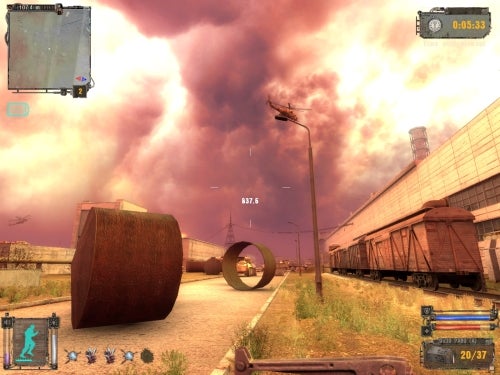
Much of the conflict in S.T.A.L.K.E.R – physical and metaphorical – is derived from this system and the clashes it creates between the various factions. From Freedom, who wishes for free access to The Zone, to Duty who wants to prevent its spread – everyone seems to have an agenda.
The Army want to control it, Stalkers want to profit from it, Scientists want to study it and then there’s Monolith, a religious sect that believe in the holiness of the centre of The Zone, the Chernobyl Nuclear Power Plant.
These conflicts, and the quest to ‘Kill Strelok’, form the focal point the game’s story and regrettably this is where the S.T.A.L.K.E.R universe begins to unravel. The basic premise is fine, especially the warring groups which add a level of moral ambiguity to the game.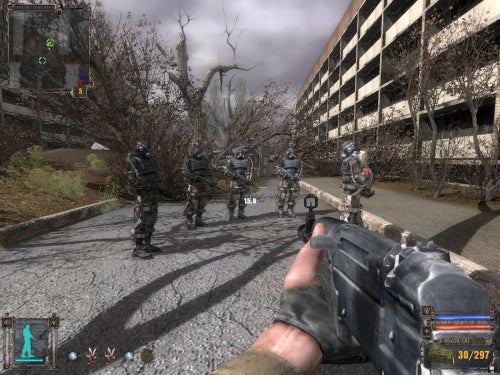
No, the real problem is that S.T.A.L.K.E.R never provides any good reason why the player should care about any of this. The Strelok plotline in particular feels clumsily put together, and seems like a flimsy excuse to push the player into opening the passage north to the town of Pripyat and the Chernobyl exclusion zone.
In essence the central plot is based around progressing from the south, where you begin, and opening the path to the north and the power plant. From time to time, when key objectives are completed, the game teases you with cinematic sequences but these serve to confuse rather than inform adding little to the experience.
You can learn a little more about the story, and your characters thoughts on events, by reading the Diary section of your PDA but these entries never really make up for the lack of a more cohesive plot. There are reportedly multiple endings depending on your actions, but one can only hope those are better than one I saw which was a severe anti-climax.
It’s a shame too because, although the story is rather uninspired, the journey is an enjoyable one filled with plenty of tension and excitement. As you progress through the game you get a real sense of your actions having an effect on the game world, with the various factions clashing head-on as you open up the more inaccessible areas of the zone.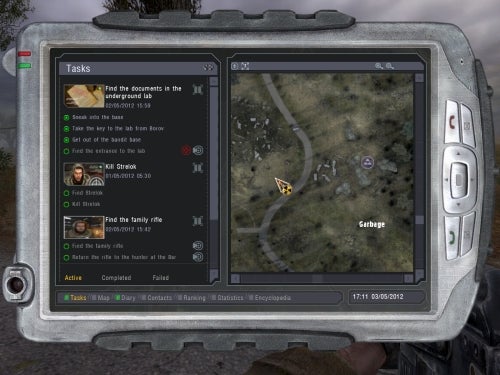
The game’s problems aren’t restricted the plotline either, with inconsistent A.I a particular annoyance. On the whole the A.I is okay, but on occasion it displays moments of utter stupidity or, even worse, signs of complete failure. Allies also have the forever annoying habit of pushing you out of the way, often into unfriendly fire!
Another example of the remaining bugs is objects from the environment, be they barrels or dead bodies, disappearing and reappearing for no apparent reason. This particular problem isn’t too troubling, but is an example of the kind of low level bugs that remain in the game.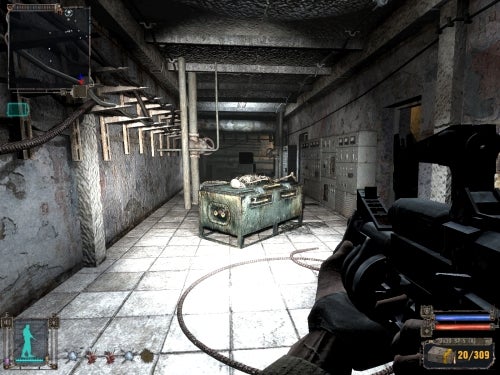
That said, for a game on this scale these are relatively acceptable problems and I didn’t come across any game breaking glitches. It took me around 20 hours to work my way from beginning to end, but this figure could range anywhere between 15 and 50 hours depending on how you want to play the game. Ultimately, if you get into S.T.A.L.K.E.R it should keep you occupied for a considerable amount of time and the more you put in, the more it gives back.
”’Verdict”’
It’s been a long time coming, but for the most part it has been worth the wait. S.T.A.L.K.E.R may not be quite the revolution it was once heralded as and it has its fair share of problems, but there’s a great deal to like about the gameplay and the wonderfully realised environment in which it is set.
It’s a game that could well divide opinion for a great deal of time. Some may consider it an instant classic, but the reality is it’s a very good game that just falls short of bringing all its constituent parts together. I’d heartily recommend playing it, if only because it’s a fresh take on an often stagnating genre, but it narrowly misses out on greater glory.

